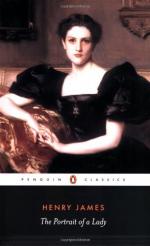|
This section contains 240 words (approx. 1 page at 400 words per page) |

|
The social observation and the memorable characterizations of The Portrait of a Lady align it with the Victorian novel of manners, while its balanced structure and artfully-wrought prose style relate it to the work of the best French Realists. Its experimentation with point of view, which culminates in Isabel's magnificent meditative vigil in Chapter Forty-Two, instead looks forward to the modernist technique of interior monologue subsequently developed by writers like Virginia Woolf and James Joyce. Another harbinger of Modernism is the "open ending" which perplexed certain contemporary readers but was firmly defended by James who believed "The whole of anything is never told; you can only take what groups together."
As a character, Isabel Archer takes her place alongside such unforgettable heroines of the nineteenth-century novel as Jane Austen's Emma (1816), Flaubert's Madame Bovary (1857), Tolstoy's Anna Karenina (1877), and George Eliot's Dorothea Brooke of Middlemarch (1872), whose stories similarly...
|
This section contains 240 words (approx. 1 page at 400 words per page) |

|




